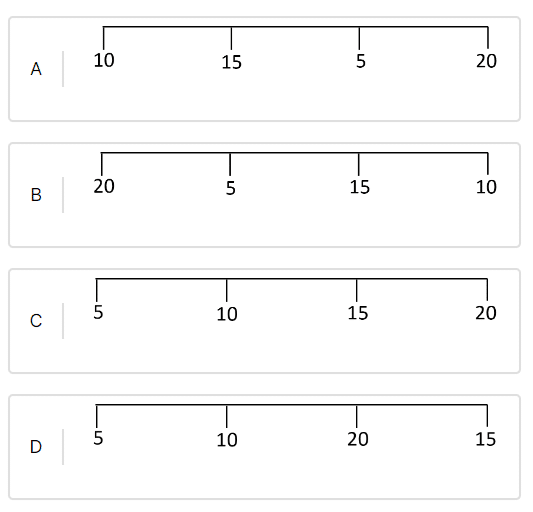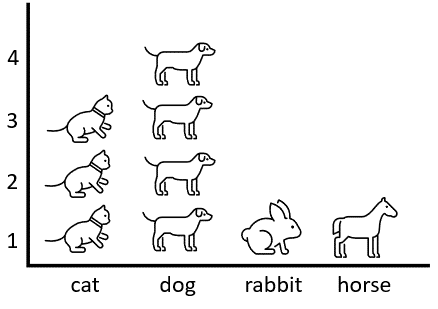MAP Kindergarten Math Test: Free Practice, Prep Tips & Scores Overview
Welcome to your complete preparation guide for the MAP Kindergarten math test section.
On this page, you’ll find everything you need to maximize your child’s math score potential, including
- An in-depth explanation of the test
- Free practice questions that resemble the actual test
- Overview & interpretation of the scores
- Actionable & fun preparation tips
So if you’d like to help your child prepare effectively and enhance their chances of scoring high, you’ll love this guide.
Let’s get started!
What’s on This Page
What Is on the Math MAP Test for Kindergarten?
The NWEA MAP math test for Kindergarten is designed to assess your child’s mathematical understanding and skills. The test is untimed and consists of around 43 questions.
The MAP test’s adaptability ensures that the difficulty adjusts based on your child’s responses. The content covered on the test varies depending on the state and school district, making the experience unique for each student.
To get more valuable information about the MAP Kindergarten test, check our detailed guide.
Areas Covered on the MAP Math Kindergarten Test
| Skill Tested | Question Type | Example |
|---|---|---|
| Geometry | Reason with Shapes and Their Attributes | Identify a shape with four sides and four corners. |
| Measurement and Data | Represent and Interpret Data Solve Problems Involving Measurement | Interpret a bar graph showing the number of toys. Determine the length of a ribbon using a ruler. |
| Number and Operations | Base Ten and Fractions Understand Place Value and Counting | Represent the number 24 using base-ten blocks. Count the number of fingers on one hand. |
| Operations and Algebraic Thinking | Properties of Operations Represent and Solve Problems | Identify the operation needed to solve 5 + 7. Solve a word problem involving addition or subtraction. |
This table provides an overview of the specific skills your child will be tested on during the MAP math kindergarten, the corresponding question types, and quick examples to help you understand what each type of question entails. Use this as a reference to guide your child’s preparation and reinforce their understanding of these fundamental mathematical concepts.
Take a Free MAP Math Kindergarten Practice Test
The sample test below is divided into easy, moderate, and difficult questions so that you can estimate your child’s level.
Easy Questions
Sample Question #1
In which number line are the numbers in the correct order?

Correct Answer & Explanation:
The correct answer is C.
The numbers get greater when going from left to right on a number line.
The number line in answer C is the only one that follows this rule:
From left to right- 5 is the smallest number, then 10, then 15, and 20 is the greatest number.
Sample Question #2
The teacher asked the students in her class what their favorite animal was.
Their answers are shown in the following picture graph:

Which animal was chosen by the highest number of students?
A. Cat
B. Dog
C. Rabbit
D. Horse
Correct Answer & Explanation:
The correct answer is B.
In this picture graph, the number of pictures of each animal tells us the number of students that chose it.
The cat was chosen by three students, so there are three cats in the graph; the dog was chosen by four students, so there are four dogs in the graph; the rabbit and the horse were each chosen by one student, so there is one of each in the graph.
Therefore, the dog was chosen by the highest number of students.
Moderate Questions
Sample Question #1
What is the answer to the following problem?
3 + 2 + 4 = _
A. 5
B. 6
C. 7
D. 8
E. 9
F. 10
Correct Answer & Explanation:
The correct answer is E.
This is an addition exercise with three addends. You can solve it in 2 steps to make it easier:
First, add 3 and 2, and the result is 5 (3+2=5)
Now, instead of 3+2+4, you can write 5+4.
When adding 4 to 5, the result is 9 (5+4=9).
Therefore, 3+2+4=9.
You can also count with your fingers to help you solve this problem: count three fingers, and then add two more, and then add four more.
You can now see that you counted nine fingers in total.
Sample Question #2
Look at the pictures:

Complete the sentence:
The butterfly is at the __ place in the line.
A. 5th
B. 7th
C. 10th
D. 8th
E. 9th
Correct Answer & Explanation:
The correct answer is E.
To figure out the place of an object in a line, you have to count the objects from left to right and stop at the wanted object.
In this case, by counting the objects from left to right and stopping at the butterfly, you can see that it is the ninth object in the line.
Therefore, the butterfly is at the 9th place in the line.
Difficult Questions
Sample Question #1
Danny walked to his school, which is located close to his house.
What is the most likely amount of time that it took Danny to walk there?
A. 5 seconds
B. 5 minutes
C. 5 hours
D. 5 days
Correct Answer & Explanation:
The correct answer is B.
The most reasonable time for walking a short distance is 5 minutes.
Answer A is not reasonable because 5 seconds is only enough time to walk a few steps, and certainly not enough time to walk from one’s home to school no matter how close the school is.
Answers C and D are not reasonable because hours and days are time units that are too long for walking short distances.
Sample Question #2
Look at the following number sequence:
10, 12, 14, 16, 18, _
What is the next number in the sequence?
A. 19
B. 20
C. 21
D. 22
Correct Answer & Explanation:
The correct answer is B.
This sequence has a rule: each number is greater than the number before it by two.
Therefore, to find the next number, you have to add 2 to the last number, which is 18.
18 + 2 = 20
So, the next number in the sequence is 20.
Understand the MAP Math Scores for Kindergarten
Introduction to MAP Scores Calculation
The MAP (Measure of Academic Progress) Math scores for Kindergarten are derived from a sophisticated adaptive assessment designed to gauge a student’s current level of mathematical understanding. The scores are calculated based on the RIT (Rasch Unit) scale, a measurement that provides a consistent and accurate representation of a student’s academic growth over time.
RIT Scores
RIT scores serve as a numerical representation of a student’s achievement on the MAP test. Unlike traditional percentage or grade-based scores, RIT scores offer a more nuanced perspective, allowing for a detailed analysis of a student’s skills and knowledge within the tested content areas.
Percentiles
MAP scores also include percentiles, which indicate the relative standing of a student compared to their peers. For example, a student in the 75th percentile performed as well as or better than 75% of students in the norming group.
Understanding Achievement Levels
High Achievement
Students with RIT scores significantly above the grade level average demonstrate high achievement. They showcase advanced skills and a deep understanding of the mathematical concepts assessed.
Median Achievement
Median achievement is represented by RIT scores close to the grade level average. Students in this range exhibit proficiency in age-appropriate mathematical skills.
Lower Achievement
Lower achievement is associated with RIT scores below the grade level average. Students in this category may benefit from targeted support to enhance their understanding of fundamental mathematical concepts.
See the table below for specific RIT scores and percentiles for Kindergarten (based on this official PDF):
| Percentile | Mathematics (RIT Score) | |
|---|---|---|
| Higher Achievement | 90 84 69 | 160 152 146 |
| Median | 50 | 140 |
| Lower Achievement | 31 16 5 | 133 127 119 |
7 Fun Activities to Help Your Child Prepare for the Math Section
Preparing for the MAP Kindergarten math test can be an enjoyable journey for both you and your child. Here are seven activities designed to make learning math engaging and fun:
1. Counting with Everyday Objects:
- Activity: Counting Fruits or Toys
- How: Ask your child to count items like apples, bananas, or their favorite toys. Make it interactive by grouping them and counting together.
2. Shape Scavenger Hunt:
- Activity: Shape Exploration
- How: Go on a shape scavenger hunt at home or in the neighborhood. Identify and name shapes such as circles, squares, and triangles.
3. Math Storytime:
- Activity: Math-themed Storybooks
- How: Integrate math into storytime. Choose books that involve counting, shapes, or basic arithmetic. Discuss the math concepts as you read together.
4. Cooking Math:
- Activity: Baking Together
- How: Involve your child in simple baking activities. Have them measure ingredients, count eggs, or divide the dough into equal parts. It’s a tasty way to practice math!
5. Outdoor Math Adventures:
- Activity: Hopscotch Math
- How: Create a hopscotch grid with numbers. Call out math problems, and your child can hop to the correct answer. It combines physical activity with math learning.
6. Pattern Play:
- Activity: Create Color Patterns
- How: Use colored objects like building blocks or beads to create simple patterns. Ask your child to continue the pattern or create their own.
7. Math Games Night:
- Activity: Board or Card Games
- How: Play board games that involve counting spaces or card games that reinforce number recognition. It’s a fun way to spend quality time while sharpening math skills.
Tips for Parents:
- Keep activities short and enjoyable to maintain your child’s interest.
- Praise effort rather than focusing solely on correct answers.
- Incorporate math into daily conversations to make it a natural part of your child’s environment.
By infusing these activities into your daily routine, you’ll not only prepare your child for the MAP Kindergarten math section but also cultivate a positive attitude towards learning mathematics.
